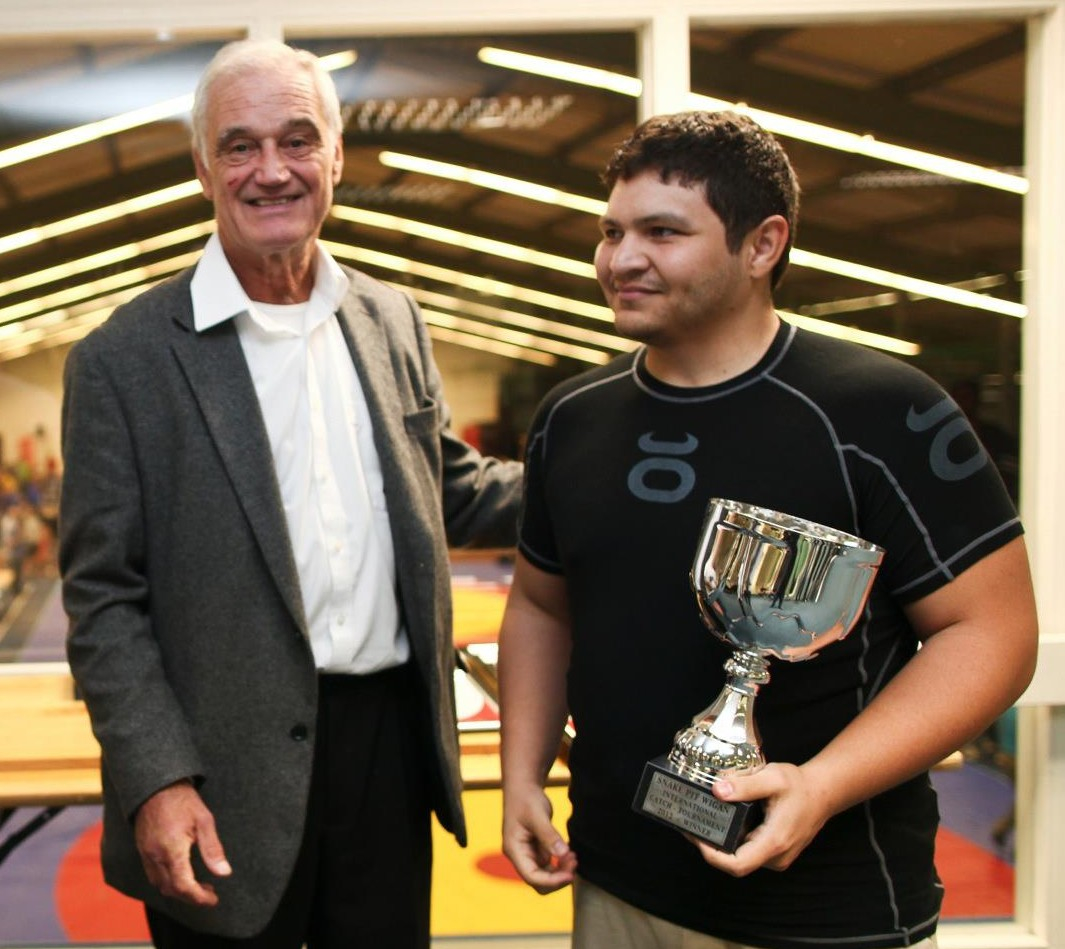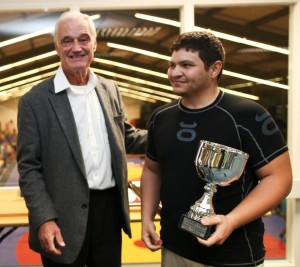
A while back I posted part one of my interview with Dr Raul Ramirez, L.Ac. titled; Chinese Kick Boxing, Wrestling and Catch Wrestling Interview with Dr. Raul Ramirez. If you haven’t read it yet just click on the title or right here to do so. For this next installment Dr. Ramirez and I discuss some of the lesser known aspects of Acupuncture while we continue with our talk on martial arts and Catch Wrestling.
Sam: What brought you to study Acupuncture and Traditional Chinese Medicine in addition to martial arts?
Dr. Ramirez: That started as a result of my trip to China. During training I hyperextended my knee after a hip throw every time I took a step I felt a sharp pain. As part of the curriculum of that martial arts school you had to learn some basic sports medicine which includes herbs and other similar treatments. They gave me some herbal patches to put over my knee during the night. The patches they gave me got really hot at night then the next day I felt better. Everything was back to normal.
Sam: Amazing! It sounds almost like a Mr. Miyagi experience? The scene in Karate Kid when Mr. Miyagi rubs his hands together before doing some type of traditional treatment to get Daniel back into the final match of the All Valley Karate Championships.
Dr. Ramirez: (Laughing) Yea! totally I was like, “whoa the herbs can do this.. what about the needles and everything else?” So when I came back to the United States I got Acupuncture treatments and really wanted to discover what else this could do. After I finished my undergraduate degree I and went straight into Acupuncture.
Sam: After getting your Master’s Degree for Acupuncture you continued to study all the way to a Ph.D?
Dr. Ramirez: Yes
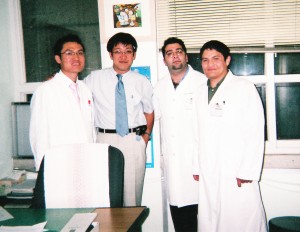
Sam: A lot of people don’t realize just to finish a Masters Degree for acupuncture takes 4 years. One third of the course work is in standard western medicine and sciences (biology, pathology, anatomy, pathophysiology, physical exam and so forth). On top of that you have to learn all the traditional medicine, the needle technique, complete over a thousand hours of supervised work in the clinic and then pass State and or National Board exams. To continue studying especially when it’s not really required for anything other than your own knowledge and contribution to the field is really remarkable.
Dr. Ramirez: Thank you, it’s true most people have no idea how much work goes into just to getting the Masters of Science Degree. I don’t know I must have been crazy to go and finish a Ph.D. afterwards. I think what inspired me was when I came back from China I wanted to learn Chinese I’ve always been interested in ancient texts. Even when I was in undergrad I began studying and I studied a lot about ancient Balinese culture. Which had a lot of Hindu background so I read a lot of ancient hindu books and ancient Chinese books then when I was in acupuncture school people were always talking about the Nei Jing which is the oldest text book we have on acupuncture I got a copy of it and it was all in English. I read it and thought it was kind of cool then later I picked up a copy that was in Chinese and English. Real quickly I realized what was in English many times did not match up with the Chinese! Many times if there was a really difficult passage in the Chinese it wasn’t in the English. A lot of it is irresponsibly translated I remember there was one edition that had a real short paragraph in Chinese and then this one chapter didn’t correspond with the modern view of Traditional Chinese Medicine so the translators had written a few extra paragraphs in English to make everything match up with the modern view.
Sam: That doesn’t surprise me to hear you say that I’ve heard the same thing from others who have studied the language and then really researched the Nei Jing.
Dr. Ramirez: Yes! In other words I’m going through the book and there’s a paragraph in Chinese then a paragraph in English another paragraph in Chinese and then the same thing in English each one relatively the same size and saying the same thing then all of a sudden a short paragraph in Chinese and then a page and a half of English making everything match up to the modern view. Which I believe if you’re going to translate something just translate it and let us know what it really says. You’ve got to do it responsibly and so after that I started reading and translating it for myself.
Sam: What was your process for translating the book yourself. I’ve heard a lot of people complain that the Chinese used in the Nei Jing is an ancient old version of the language
Dr. Ramirez: I used a bunch of different textbooks plus my own understanding of the language. I also tried to look up some of the ancient meanings of these words because some of them mean something completely different now days then at the time they were written. Even as I was finishing acupuncture school I would go to a cafe at night and I’d re-write out the Nei Jing in Chinese to practice my writing so I wouldn’t lose the characters. I would only write it out after I had either translated it in my head in English or written it out in English once I had a thorough understanding.
Sam: Can you tell me what is difference between the modern view of acupuncture and what is taught in the Nei Jing?
Dr. Ramirez: It is more objective actually. The Nei Jing is a huge book it has many chapters and the way it’s written the Emperor is learning and in each chapter they pretty much expect you to remember what was said in the previous chapter so they are not going to mention something again from a prior chapter. Thats where alot of the errors come up, a lot of scholars will try to isolate a chapter and it doesn’t work that way. A lot of books will talk about these are the Liver symptoms or these are the Kidney symptoms of Febrile Disease or whatever. But in the Ling Shu it talks about how do you verify if it’s Liver symptoms? If it’s a Liver problem it’s not so much by the symptoms but by the pulse that’s what is going to give you the evidence and let you know the real root of the problem. Symptoms can be from anything any imbalance can cause a number of symptoms you have to check the pulse properly at the neck and the wrist.
Sam: For people who haven’t heard of the Nei Jing or don’t know anything about it how would you explain to them what the Nei Jing is?
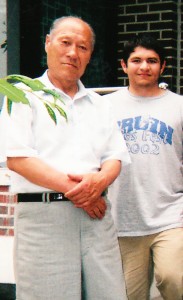
Dr. Ramirez: You could sort of think of the Nei Jing as the Bible of Acupuncture. Everyone quotes from it but no one really looks at the context. Sort of like the Christian Bible you’ll have someone professing one passage but not having it match up with the rest of the text. The Nei Jing is a book that definitely has to be understood. It has two sections the Ling Shu and the Su Wen and they are really integrated. Only a few times will the book even mention a previous passage. The Emperor really seemed like he was a good student and he really tried to learn there’s very little repetition in the book. So as the reader you have to go through the whole thing once and then start putting things together. There are somethings that are very seminal so if you are the acupuncturist there are a couple chapters in the Ling Shu that talk specifically about how to check the pulse properly, how to needle, the specific insertion depth and time period the needle should be retained these things are very clear but some other things such as different syndromes are not as clear and the book is not going to mention that you should have already checked the pulse.
Sam: Because you should already know that and be doing it from having read the prior chapter(s)?
Dr. Rameriz: Yes exactly.
Sam: That’s a really good explanation of why there is so much confusion around the Nei Jing. Even going through school especially looking back on it I think most of my professors and teachers really only knew the modern view of acupuncture.
Dr. Rameriz: Yes! (Laughing) you are probably correct. In several of the chapters of the Nei Jing it is in question and answer format between the doctors and the Emperor sometimes they even talk about personal things. There was a young doctor and Huang Di (Huang Di is a legendary figure one of China’s great emperors he has been credited to have laid the foundation of Chinese civilization) had to explain a lot of stuff to him so Huang Di actually reprimanded this young doctor in the book. I gotta find that chapter so you can see it but I believe he actually takes him (the young doctor) to another room and then cuts his face so that it bleeds a bit and he will remember to study hard. Huang Di will even ask a few questions about ancient people. So you are reading a book that was written thousands of years ago and Huang Di is ancient to us but he will be asking questions about medical treatments done by people that are ancient to them!
One part I like in particular Huang Di is asking what is the difference between rituals and prayers and what we do with the needles and herbs. The doctor explains to him what we practice is science and treatments are based on a diagnosis made by evidence it basically says the first one is praying and the second one is science. Also Huang Di doesn’t really like herbs and that’s his main reason for learning about acupuncture because he’s seen high quality results with just the needle treatment. There’s never much explanation why he doesn’t like herbs. In the Nei Jing there are a few herbal formulas I remember one formula that is an arthritis rub but there’s very few examples of that in the book. A few times the book will tell you to add herbs to the treatment. Basically if you follow the Nei Jing a lot of our problems can be treated effectively with just the needle treatment.
Sam: After having been in practice outside of school I’ve found the herbs are really hard to get people to take or comply with. Preparation takes time, they don’t taste good or smell good and as sad as it may sound people generally don’t want to do that much work to get better. So having skill with the needle really is paramount in our profession. I’ve even had herbs ready and recommended it and patients have straight out told me no it’s too much time or work.
Dr. Ramirez: Yes that’s absolutely true.
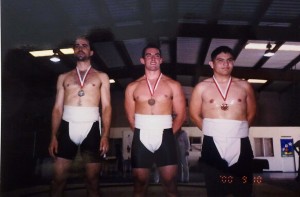
Sam: What are some of the relationships you see between Chinese medicine and martial arts?
Dr. Ramirez: Both are helpful in many ways physiologically we all know about exercise and how it helps us stay healthy but also the respect of other people both martial arts and the study of medicine can help build those things within an individual. Extreme causes of stress can be helped and treated with both martial arts training and acupuncture treatment so they really can work and aid each other hand in hand.
Sam: The two of them kind of balance each other out. You’re learning how to cause injury through martial arts and how to treat injury through Chinese medicine. Thinking about the modern day warrior vs the ancient warrior do you think the modern day warrior seems to be imbalanced?
Dr. Ramirez: Yes in ancient times there were several really famous generals who developed styles of Kung Fu such as the Ying Yang Palm like we talked also Sing Yi there is another internal martial art that can be used for health sort of like physical therapy but it can also be applied as a method of self-defense training and a way to hurt people. Several well known scholars disagree about if he made it or not but it is also associated with a military general.
Sam: Even going to the old Farmer Burns Mail Order Lessons on Wrestling and Physical Culture there’s a lot of health advice, breathing exercises and more.
Dr. Ramirez: That’s right if you go back to his old lessons on wrestling he’s included almost as much information in there on those topics as he does on actual wrestling technique.
Sam What is your current focus now in both your acupuncture and martial arts practice?
Dr. Ramirez: Well in acupuncture it’s all about helping people heal. I have a wide range of patients I don’t just focus on or specialize in one area like fertility or something. I work more or less as a general practitioner treating everything.
Sam: It sounds like you may have a specialty in your use of classical Nei Jing protocol?
Dr. Ramirez: Yes in fact I have been working toward developing a continuing education course on Nei Jing fundamentals. I want to start small with this first course it will teach proper pulse checking and diagnosis technique, use of the five shu points and acupoint categories. It is in the approval process right now to see how many units it will be approved for. When the course is approved, the class will be announced on the website; neijingeasternmedicine.com
Sam: That’s great! I will definitely take your course when it’s ready what was your inspiration to do this?
Dr. Ramirez: Lots of people who know I study this ask me questions about it infact I’ve even had several nurses come into my clinic just to learn about how the pulse will change by the end of a treatment. If a patient is treated properly there will be a change in the pulse at the end of the treatment in comparison to the patients pulse before the treatment. So the patient doesn’t have to take my word for it I can show you how to check the pulse yourself before and after a treatment to see if there is a change and it is different. I always check the pulse at the neck and the wrists on both sides of the body sometimes even the pulse at the foot.
Sam: What is the significance in checking the pulse in multiple locations?
Dr. Ramirez: The neck pulse represents the Yang aspect of the body and the wrist pulse represent the Yin aspect. If you only check the wrist pulses you are really only checking and comparing the Yin aspects to each other.
A patient will usually have one pulse stronger than the other for example a neck pulse will be stronger than the wrist pulse or the wrist pulse won’t be even with the neck and so forth. The neck pulse and wrist pulse should be beating at the same speed, strength and intensity it should feel really nice it should not be too soft or too strong. But if there’s an internal imbalance then there will almost always be one pulse that is off. For example the neck pulse could be really thready and weak while the wrist pulse is not or one side of the body could just be off. As the doctor you will have to decide how big a difference it is between the pulses. At the end of the treatment after using the correct points you will check the pulse again and try and feel if there has been any change. This change can happen really quickly with good acupuncture the pulse will be balanced. In the Ling Shu chapter 9 it teaches you how to balance the pulse.
Sam: That’s right the last time you came down to San Diego and we trained together you actually did this with my 5 year old son his neck pulse was weak compared to his wrist pulse and I think it took about 5 mins for you to balance out his pulses. What I really like about this style of treatment is you have more objective feedback pertaining to the effectiveness of what you are doing.
Dr. Ramirez: Yes exactly in fact in the Nei Jing is says if someone comes in a with a lot of pain and you treat them to the best of your ability and at the end of your treatment if they still have some pain but you have balanced the pulse don’t worry about it because everything in their body internally is working correctly and they will heal it just takes time.

Sam: It must be very helpful to have confidence to know if someone comes to your clinic for acupuncture treatment they will be getting a very authentic treatment based upon solid classic principals of acupuncture?
Dr. Ramirez: Thanks yes I feel like I have a good lineage (laughs)… traditionally it’s said in martial arts and acupuncture that you should have good teachers behind you and in the case of chinese medicine the Nei Jing should be one of those teachers.
Sam: Yes very good point, now how about your current focus as far as your martial arts training goes? Didn’t you just recently return from a week long intensive Catch Wrestling camp with Roy Wood over in Wigam England can you tell me about that?
Dr. Ramirez: Yes the training comprised of three 90 minute training sessions per day. The first session of the day focused on conditioning for wrestling, the second focused on technique, the last session focused on adding the techniques into wrestling and sparring. If you won a match you would continue wrestling until someone beat you. It was an exercise in humility. At the end of the week the staff selected those of us fit to wrestle in the big event on Saturday.
The event was held at the biggest Freestyle wrestling event in the UK including wrestlers from other countries. We held a match every hour, five matches total. Each match was one 20 minute round. A person could win by submission or pin. If time ran out, the judges would declare a winner based on whoever was most aggressive. Protective gear like mouth guards and cups were optional. I won my match by Crossface.
Sam: Sounds like an amazing experience! Anything else on the horizon concerning martial arts for you?
Dr. Ramirez: I’ve also developed a sport Sanda certification based only on tournament rules and a combative Sanda certification. The combatives course includes all sport Sanda techniques and also self defense techniques I feel go beyond the Chinese military techniques. I have included some of the best techniques I learned in my training around the world, like the guerrilla techniques of Silat, Wrestling, and the advanced techniques of battle tested, ancient Kung Fu styles. I also want to continue to study Catch Wrestling with Billy Robinson as well as spread and teach it here in L.A. Catch Wrestling is something I’d like to really help spread and keep alive.
Sam: I think that’s great! It’s very difficult to come across genuine authentic instruction in both the arts of Sanda and Catch wrestling. The fact that a guy like you who has made the effort, invested your time and money and has traveled around the world to learn the genuine article is now offering to share what you have learned is fantastic.
I want to thank you for taking the time to talk with me and share so much of your knowledge about Chinese Medicine, Acupuncture, the Nei Jing, Kung Fu and Catch Wrestling. I really enjoyed it.
Dr. Ramirez: You bet thanks for interviewing me Sam!
To learn more about Dr. Ramirez’s Acupuncture practice and or to schedule a treatment visit: http://www.neijingeasternmedicine.com/ To contact Dr. Ramirez about martial arts training; including, ancient Kung Fu, Sanda (Chinese Wrestling and Kick Boxing) and Catch Wrestling visit: http://kungfukulture.blogspot.com/
![]()

